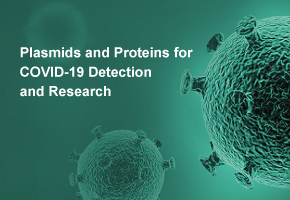World’s First EGFR ADC – Vibecototat Monoclonal Antibody Injection Approved in 2025: A New Era of Precision Oncology
Antibody–Drug Conjugates (ADCs): Leading the Global Oncology Revolution
As cancer treatment enters the era of precision and personalization, Antibody–Drug Conjugates (ADCs)—often referred to as “biological missiles”—represent one of the highest frontiers of pharmaceutical innovation.
An ADC combines an antibody, a cytotoxic payload, and a chemical linker, enabling targeted delivery of potent toxins directly into tumor cells, thereby maximizing efficacy while minimizing systemic toxicity.
Over the past decade, the global ADC market has experienced rapid expansion.
According to Mordor Intelligence, the ADC market is projected to exceed USD 57 billion by 2030.
From Roche and Daiichi Sankyo to AstraZeneca, ADC pipelines have become the primary growth drivers for leading pharmaceutical companies. Meanwhile, China’s acceleration in ADC innovation is now attracting global attention.
EGFR-Targeting ADC: Filling a Global R&D Gap
In October 2025, the National Medical Products Administration (NMPA) of China granted conditional approval for Vibecototat Monoclonal Antibody Injection, marking the world’s first EGFR-targeting ADC.
This milestone is not only a breakthrough in China’s ADC development history but also a clear signal that Chinese innovators are moving from followers to global pioneers in the ADC field.
EGFR (Epidermal Growth Factor Receptor) mutations are common in non-small-cell lung cancer (NSCLC). However, patients who develop resistance to traditional EGFR-targeted therapies have long faced a lack of effective treatment options.
The approval of Vibecototat provides a new precision pathway for this patient population and demonstrates China’s systemic capability in ADC design, linker stability, and novel target discovery.
Six New Drug Approvals: China’s “Golden October” of Pharmaceutical Innovation
According to Hong Kong Dengyue Internatioal Department, six new drugs were approved by the NMPA in October 2025, including four Class I innovative therapies.
These approvals span oncology, respiratory, and immune-related diseases—marking a new phase of high-frequency, high-quality innovation in China’s pharmaceutical R&D landscape.
Drug Name | Type | Approval Date | Indication | Innovation Highlight |
Vibecototat Monoclonal Antibody Injection | ADC biologic | Oct 30, 2025 | EGFR-positive tumors | First-in-world EGFR-targeting ADC |
Namister Tablets | Small-molecule oral drug | Oct 28, 2025 | Chronic respiratory disease | Novel mechanism for airway inflammation |
Mevanertinib Maleate Tablets | Targeted therapy | Oct 28, 2025 | NSCLC (EGFR L858R mutation) | Precision therapy for rare mutation |
Bodutuximab Injection | ADC biologic | Oct 17, 2025 | HER2-positive breast cancer | Next-gen linker design for improved safety |
Remabizin Injection | Biologic agent | Oct 17, 2025 | Autoimmune diseases | Novel immune-microenvironment modulation |
Momister Tablets | Small-molecule drug | Oct 13, 2025 | Inflammatory diseases | Selective inflammatory pathway inhibitor |
These six new approvals highlight three key trends in China’s pharmaceutical innovation:
l Accelerated target innovation: from traditional pathways to novel signaling networks;
l Optimized formulation and delivery: ADCs and oral targeted therapies evolving in parallel;
l Expanded disease coverage: from oncology to respiratory and immune disorders.
China’s “Innovation October” not only reflects growth in the number of approvals but also signifies maturity in CMC processes, clinical design, and regulatory pathways.
DengYue Global Insight: From Follower to Co-Creator – China’s ADC Innovation Reaches Global Leadership
The six new drug approvals in October 2025 demonstrate not just the benefits of favorable policy environments but also a deep transformation of China’s R&D and internationalization capabilities.
Most notably, the approval of Vibecototat marks China’s first globally original breakthrough in one of the world’s most competitive therapeutic areas—ADC oncology.
From the world’s first EGFR ADC to multi-domain innovations in respiratory and immune diseases, China’s pharmaceutical industry is advancing toward an era of faster, steadier, and more globally integrated innovation.
Traditionally, global drug development followed a one-way model: “Western discovery — China introduction.”
Now, the trend is reversing—China’s innovations are being exported to the world:
l Multiple Chinese ADC candidates are undergoing clinical trials in the U.S., EU, and Japan;
l Overseas licensing and co-development deals continue to surge, with China’s license-out transaction value exceeding USD 12 billion in the first three quarters of 2025;
l Chinese biopharma companies now rank among the global leaders in original publications on ADC linkers, payload technologies, and structural design.
This transformation signals China’s evolution from a manufacturing hub to a global innovation powerhouse.
As clinical data mature and global regulatory frameworks align, more first-in-class and novel-mechanism drugs originating in China are poised to enter the global market.
- Like
- Reply
-
Share
About Us · User Accounts and Benefits · Privacy Policy · Management Center · FAQs
© 2025 MolecularCloud




